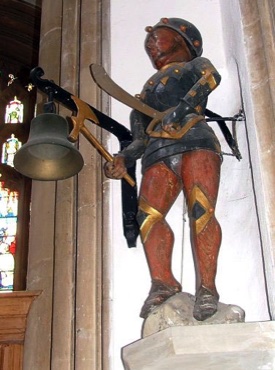
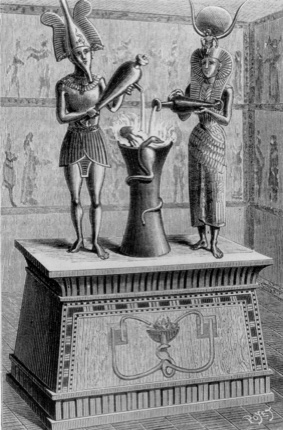
Almost from the time people first began to create 3-dimensional effigies they wanted them to move—to imitate life. The earliest known articulated sculpture comes from the Gravettian culture (mammoth hunters) about 28 thousand years ago. 
The earliest documented examples of “true” automata come from Ancient Egypt—about 2500 BC. Priests had statues made in which they could hide and manipulate certain parts to make the people believe that the statues were alive so as to increase their religious devotion
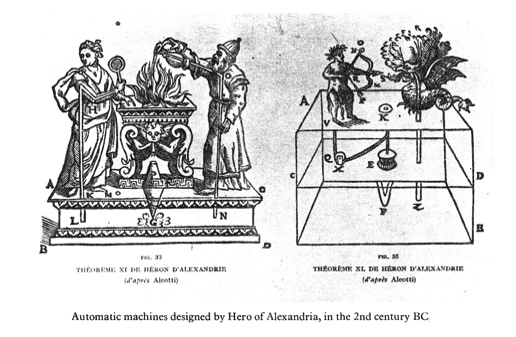
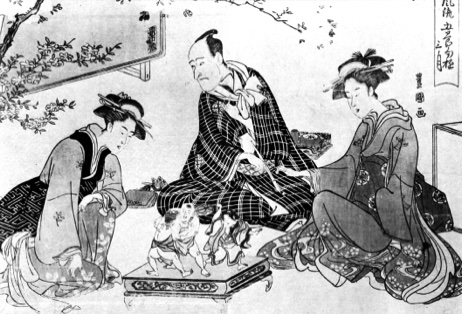
Japanese and Chinese craftsmen also created moving figures. Chinese craftsmen built an entire mechanical orchestra for the emperor during the Han Dynasty—around 300 BC. Later they built birds with moving parts, mechanical otters that swallowed fish, and monks begging girls to sing.
After a long period in which automata were forgotten they became familiar again to ordinary people in the 14th Century with the construction of animated clocks in the great cathedrals. Scenes depicting human figures and animals were set in motion on the stroke of each hour. A number of these steeplejacks still exist.
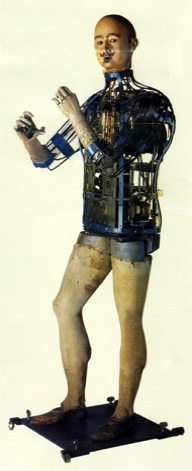
In the 17th Century, a new type of automaton appeared—the human robot. This automaton had a very complex clockwork mechanism and took several years to design and build. These robots were able to draw, write, play a small musical instrument, and sometimes pronounce a few words. Each robot was made individually, like a marvelous piece of precision jewelry. Only a few examples remain, and are to be found in museums, or occasionally in private collections.
The most famous of early automata was the creation of Jacques de Vaucanson, who in 1738 dazzled Paris with "an artificial duck made of gilded copper who drinks, eats, quacks, splashes about the water, and digests his food like a living duck." The complexity of this duck was enormous—there were hundreds of moving pieces in a single wing.
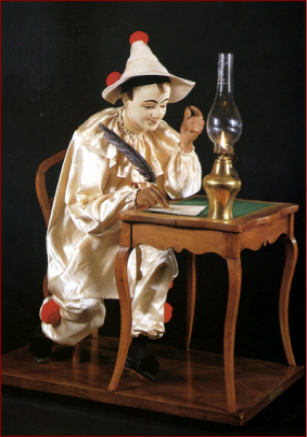
At the end of the 19th century in what is called the Golden Age of Automata, from about 1845 to 1895, the toy industry developed considerably owing to technical progress and the influence of the numerous international exhibitions. Automaton makers were now able to produce more copies at reasonable prices. At the same time, rich families fell under their spell. The "objet d'art" side of the automaton made it a collector's item and it became exceedingly fashionable. These clockwork toys were for adults to look at rather than for children to play with. These frivolous French parlor pieces are what most people associate with historical automata. But this production virtually ended with the start of World War I.
Automata re-emerged as an art force in the 1980’s with the advent of the Cabaret Mechanical Theatre, a gallery shop located in Covent Garden in London. The CMT began to feature the work of a small band of burgeoning British automata makers whose work combined a blend of ingenuity, creativity, nostalgia, irreverence, idiosyncrasy to perfectly personify that quirky British wit. Their work inspired countless others to take up automata making as their primary form of artistic expression. The CMT closed its doors in 2000, but continues as an important web presence.
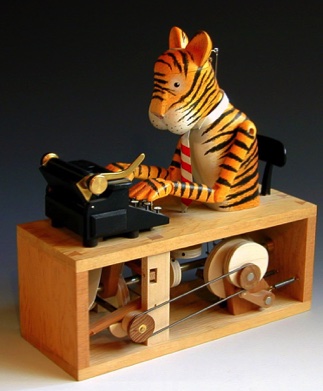
In Ancient Greece and Rome many automatons were constructed. Their workings were based on simple principles of physics incorporating the movement of liquids and air pressure. The construction of these robots led to real research in physics and produced results that were often imitated in later times. Hero of Alexandria in the second century BC. documented these works in his treatise Pneumatica, which was finally translated in 1501. His automata were mechanical devices that demonstrated remarkably lifelike behavior. They took advantage not only of gears but also of gravity, hydraulics, pulleys and sunlight—the effect was often dazzling.
